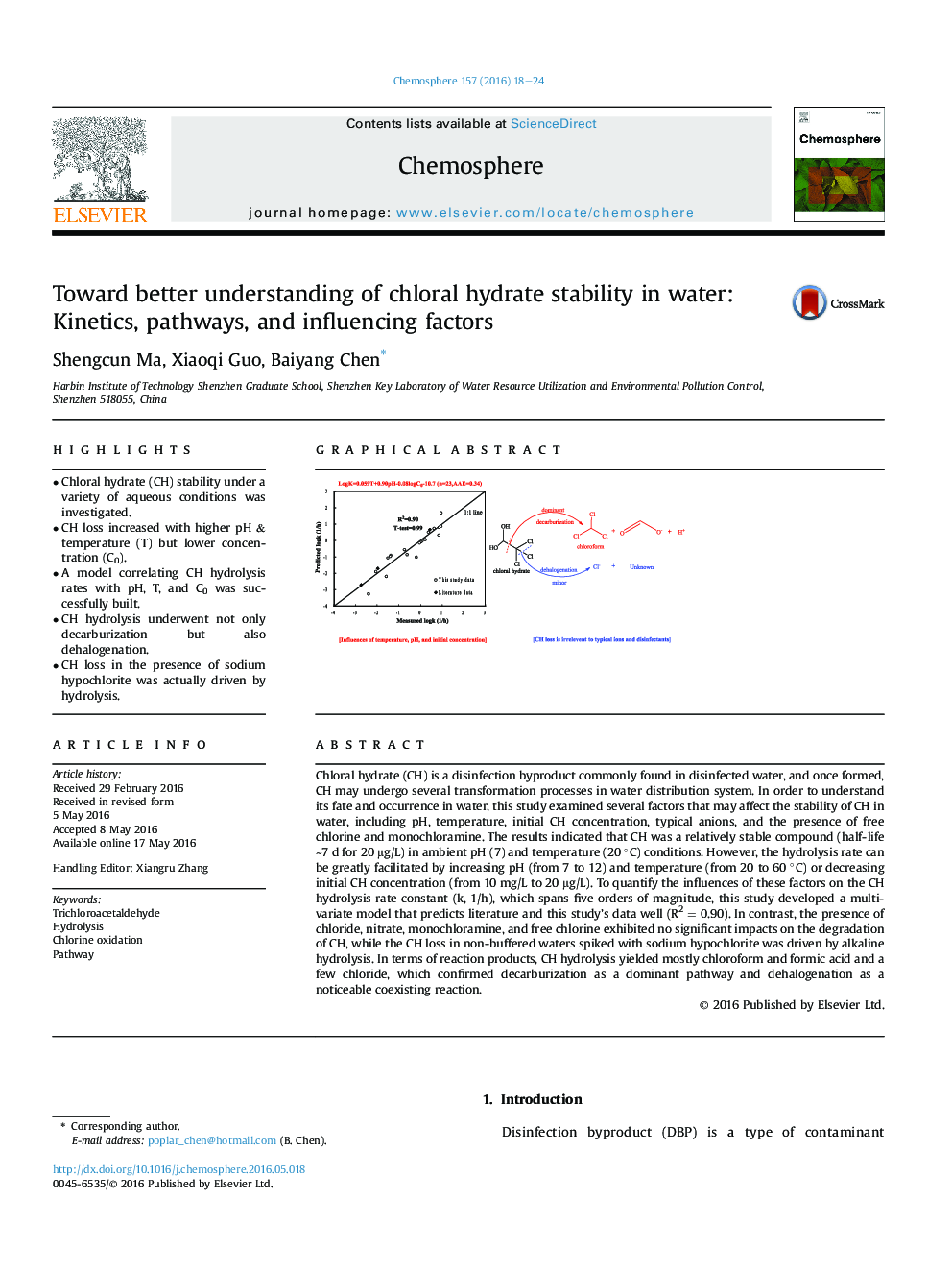| کد مقاله | کد نشریه | سال انتشار | مقاله انگلیسی | نسخه تمام متن |
|---|---|---|---|---|
| 4407613 | 1618814 | 2016 | 7 صفحه PDF | دانلود رایگان |
• Chloral hydrate (CH) stability under a variety of aqueous conditions was investigated.
• CH loss increased with higher pH & temperature (T) but lower concentration (C0).
• A model correlating CH hydrolysis rates with pH, T, and C0 was successfully built.
• CH hydrolysis underwent not only decarburization but also dehalogenation.
• CH loss in the presence of sodium hypochlorite was actually driven by hydrolysis.
Chloral hydrate (CH) is a disinfection byproduct commonly found in disinfected water, and once formed, CH may undergo several transformation processes in water distribution system. In order to understand its fate and occurrence in water, this study examined several factors that may affect the stability of CH in water, including pH, temperature, initial CH concentration, typical anions, and the presence of free chlorine and monochloramine. The results indicated that CH was a relatively stable compound (half-life ∼7 d for 20 μg/L) in ambient pH (7) and temperature (20 °C) conditions. However, the hydrolysis rate can be greatly facilitated by increasing pH (from 7 to 12) and temperature (from 20 to 60 °C) or decreasing initial CH concentration (from 10 mg/L to 20 μg/L). To quantify the influences of these factors on the CH hydrolysis rate constant (k, 1/h), which spans five orders of magnitude, this study developed a multivariate model that predicts literature and this study’s data well (R2 = 0.90). In contrast, the presence of chloride, nitrate, monochloramine, and free chlorine exhibited no significant impacts on the degradation of CH, while the CH loss in non-buffered waters spiked with sodium hypochlorite was driven by alkaline hydrolysis. In terms of reaction products, CH hydrolysis yielded mostly chloroform and formic acid and a few chloride, which confirmed decarburization as a dominant pathway and dehalogenation as a noticeable coexisting reaction.
Figure optionsDownload as PowerPoint slide
Journal: Chemosphere - Volume 157, August 2016, Pages 18–24
